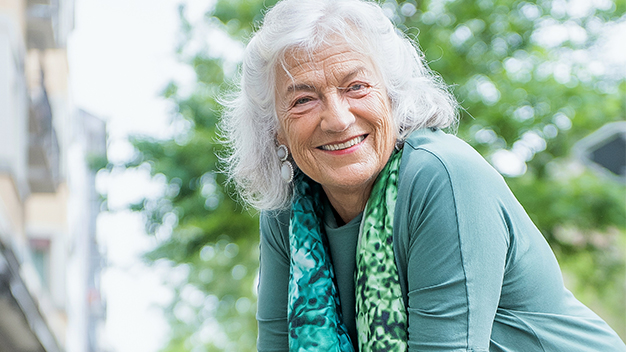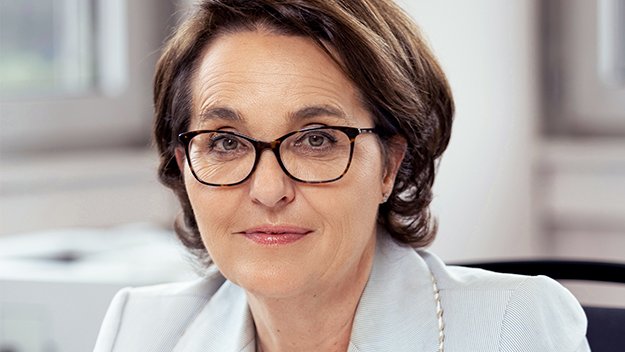How do you go about planning the shows?
I start with a detailed map in order to get a feeling for where the public will be situated as well as the precise location of nearby cities, towns, mountains and any obstacles. Afterwards, I analyse which flight acrobatics are suitable in such an environment and draw them on the map. When the entire team gets together for the presentation, I explain my plan. Then the discussion starts – everyone can freely express their opinions and reservations. Ultimately, we decide on the final programme.
Is there no additional safety authority that approves the programme?
There is. At the beginning of the year, we present the entire programme we plan to fly in the following months to the Display Control Committee. During the presentation, we point up the particular obstacles at the various demonstration locations and highlight them on the map. If the committee is in agreement with the analysis, we’re granted approval for the programme.
How do you practice the manoeuvres before performing at the various venues?
We fly the programme first without an audience and record it with a camera from the perspective of the audience. After the training flight, we analyse it on a computer display and can still make necessary corrections on the day of the performance.
What’s of particular importance to you as squadron leader?
Trust is a must; it always has to be there. What’s more, all of the team members need to fully understand that it takes each and every one of us for the formation to succeed at the end of the day. Sometimes you have to swallow your ego for the sake of team performance. You need to cultivate this mindset and address it from time to time. It doesn’t help if four of the five guys can fly very close together, but the fifth for whatever reason needs a bit more distance. Then the group has to orient itself to this guy so the aerial “picture” is right. That’s not always a simple thing.
How do you sense the trust of your teammates?
When the team seems laid back. That feeling comes when I radio them or look back during the flight. As long as everyone is calm and collected, trust is there. If I get a different impression, I naturally have
to do something about it.
Meaning you change something during the flight?
Yes. For example, I can slow us down a bit. This of course makes the programme longer, but nobody on the ground notices that.
How do you get along with each other in private life?
We know each other extremely well and frequently get together after work – even with our ladies.
But of course tensions can arise.
In such cases, I have to put on my leader’s cap. It’s a technique I call “aggressive listening”: zeroing in on a conversation to get a sense of what’s going on overtly and between the lines and also to pick up the nuances. It’s my job to ask questions and talk straight with people. The whole thing takes time and can be exhausting, but it’s enormously important.
And if somebody doesn’t exactly fit with the team?
We select all our team members ourselves – including our boss, the commander. We don’t “have to” take anybody in; we just hope that someone fits the bill.
As the pilot, how much do you rely on the ground personnel?
We’re undoubtedly one of the few countries where the team members don’t control their aircraft themselves. We have a very close relationship with our technicians. If a mechanic confirms that a plane is ready to fly, I would never question that decision.
What is your basic attitude towards technical aids in aviation?
You’ve got to trust them. However, when it comes to avionics, there’s always a backup. We never rely on a single system. Anyway, the F-5E Tigers we fly for demonstration purposes have relatively little technology in them.
Some would say that your jets are a bit long in the tooth.
They’re totally antiquated – for military use at least. But we need these babies for our shows, and for that they’re still in full swing.
In 2016, you lost for the first time one of the Patrouille Suisse Tigers in a tragic crash. Does this event still go bump in the night for you?
The aftershock was enormous. In the meantime, the investigation is drawing to a close so we now have the ability to assess which immediate measures need to be taken in order to avoid such an incident in the future.
And for your team?
We talk a lot today about potential incidents like that so we’re mentally prepared to take the proper action. The disaster in 2016 was a profound experience, a shock that changed all of us – also in the way we involve our families, our loved ones, in our work.
To what extent has the trust factor suffered in the aftermath?
Not flying together again or not trusting each other anymore was never up for discussion. In our profession, the risk of an accident comes with the territory.
And to what extent is fear your constant co-pilot?
I have no fear when I’m flying on my own. But I still have a kind of stage fright before performances. Like with any actor, it’s a reflection of my respect for the task ahead. And it also helps me to stay focused. The stage fright disappears as soon as the afterburners kick in.
Which manoeuvre would you never fly at an air show? Where’s the limit?
Our programme needs to be up and running flawlessly within the space of two weeks. That’s not much training time. We frequently try new manoeuvres, but we have to have them down pat after just a few flights, otherwise they don’t make it into the programme. Foreign teams, who have considerably more time available, occasionally do an upside-down formation flight, which is extremely difficult to pull off. I’d never do that – not least because I’m convinced that the audience doesn’t really catch the nature of that feat.
How do you perceive the public’s cheers, the pride, the trust they place in you?
We get a lot of that. It feels good.
Has this changed since the climate discussion got its start?
Amazingly enough, not. Of course there’s the one or the other inquiry. But we don’t fly enough as a team to have a big impact on the emissions question.
How long will you still be flying for the Patrouille Suisse team?
42 is the maximum age limit, and then you’re kindly asked to hand over your wings. But like many others before me, I’ll leave before then. After all, I’ve been with the team for ten years now. At some point, one should make room for younger flyboys … or girls!
Gunnar Jansen – up close and personal
When was the first time you flew an airplane?
When I was 16, in a friend’s homemade plane. He briefly handed over the yoke to me while we were flying in Ticino. At 19, I completed my first flight in a military machine during basic training. It was a PC-7.
What was your dream job as a kid?
I wanted to be an astronaut. My fascination with space has remained, but today I’m glad I don’t have to fly that far above terra firma.
What rituals do you uphold in the Patrouille Suisse?
We always fly wearing white socks. It’s kind of a thing we have, you know, about being 100 per cent ready on the day of the performance. If you forget to put them on, you have to go barefoot in your shoes.
Oh, and we also clap each other’s parachute as moral support before a flight; then when it’s all over, we shake hands. And lastly, we fête a pilot once he’s flown his first fair-weather programme in a foreign country before a crowd of 100,000 people: he somehow happens to go for a swim …
Which aircraft type is your favourite?
The F-16. That bird has fascinated me ever since I was a kid. Never flew one, though.
Which air show do you like the best?
The one above the Lauberhorn downhill race venue in Wengen, mainly due to the breathtaking setting. Pulling off a full loop right in front of the Eiger north face is … what can I say? … sweet indeed.
How fast are you under way in private life?
I have a thing for superb engines and go for a spin on the racetrack from time to time.
How do you gain some privacy otherwise?
By doing the exact opposite of my everyday routine. I like fishing and astrophotography – both help me to recharge my batteries. And I appreciate just being alone for once, not having to talk.
Your favourite holiday destination?
If it’s got a beach, I’m a happy man.
Which personal goal do you still want to achieve this year?
Basically, my aim is to inspire as many young people as possible to embrace aviation. Since 2019 marks the 55th anniversary of the Patrouille Suisse, there will be a celebration with many former pilots in attendance. I hope to offer them a particularly beautiful demonstration.
What would you like to pass along to our readers?
Never be satisfied to rest on your laurels. This also applies to trust: you need to work on it every day and not simply lean back and take it for granted.






